Autumn sages, Salvia greggii, are low key shrubs most of the year. In cool seasons these evergreen mounding sages shine and give us blooms for a long period adding radiant color to the garden. Right now in my garden they are still in full bloom and it reminds me to buy more! I’d love to try taking cuttings from them.
Autumn sage is an herbaceous perennial native to Texas but very suitable to mix with our native Californian plants. It was named in 1870 by botanist Asa Gray, and in doing so he honored Josiah Gregg, an early American explorer and botanist. It comes in many colors, white, pink, magenta, salmon and red and even blues and purples. There are new varieties bred for improved summer flowering, too.
Deer don’t touch these in our garden where the animals abound. When they bloom, I’m reminded to plant other autumn blooming plants near each one to multiply the color that I appreciate so much right now. Pineapple sage, Copper Canyon daisy or Tagetes lemmonii, and fall blooming grasses like Miscanthus or our native deer grass would look well in combination with Autumn sages.

Magenta Autumn sage, Salvia greggii 'Lipstick', in the box Elder bed glows against the forest beyond
Including an Autumn sage in most planting beds is a great idea for extending colorful bloom, like one I posted about which has a native Box elder, red Autumn sage, a Curlicue sage, which is really an Artemisia, and a puff of Brachyscome multifida. Now when the tree is nearly leafless, the Autumn sage is a star, blooming brightly.
One perfect companion is an often overlooked cool season low-grower called Brachyscome multifida or Cut Leaf Daisy. A periwinkle blue flowering perennial and deer resistant, it contrasts beautifully with some of the bright magenta Autumn sages.
Another sage that resembles Autumn sage very closely and blooms at the same time is Germander Sage or Blue Oak Sage, Salvia chamaedryoides. It’s a wonderful hardy sage, as well, and has the benefit of true blue color.
Care is easy for this sage,…you really only have to prune and shape it to be bushy and full. It needs little water, but planting it near a bit of afternoon shade can help keep it lush through the hot summer. Use hand clippers and snip each branch at a slightly different length for a more natural-looking effect.
This year, after planting Penstemon ‘Violet Dusk’ near a red Autumn sage, I found that they bloomed long and prettily together after other blooming plants had faded away. They made bright and vivid spots in the garden.

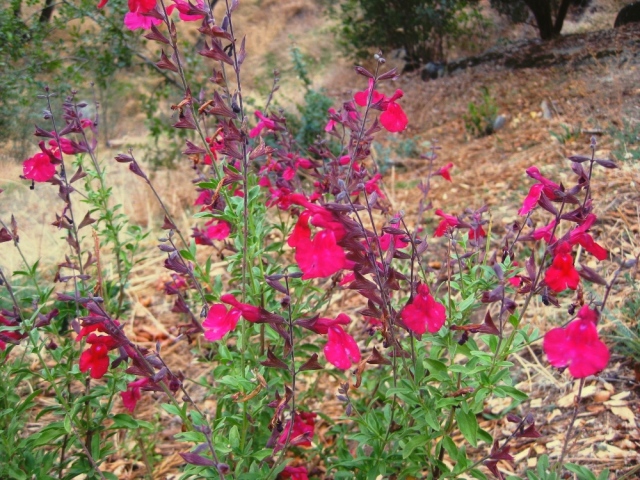
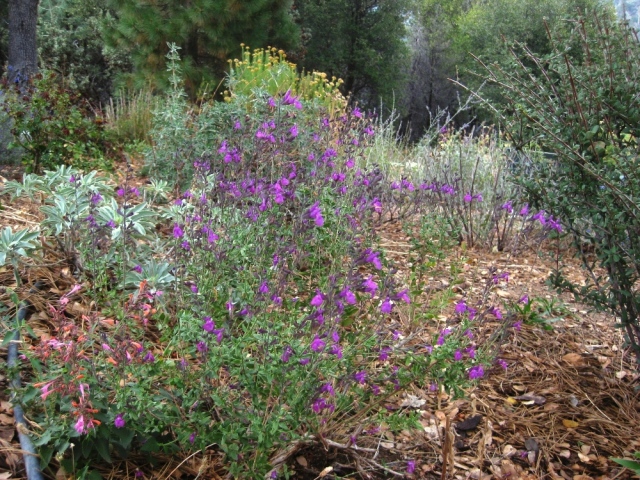
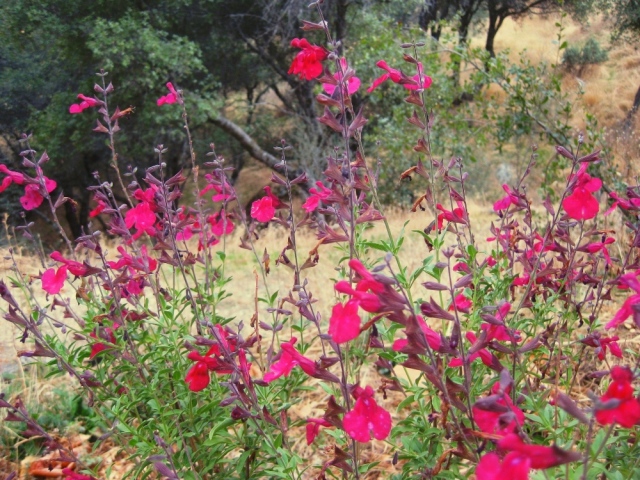
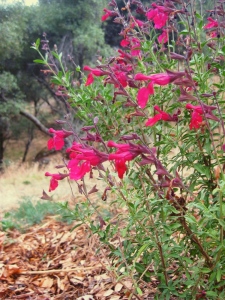
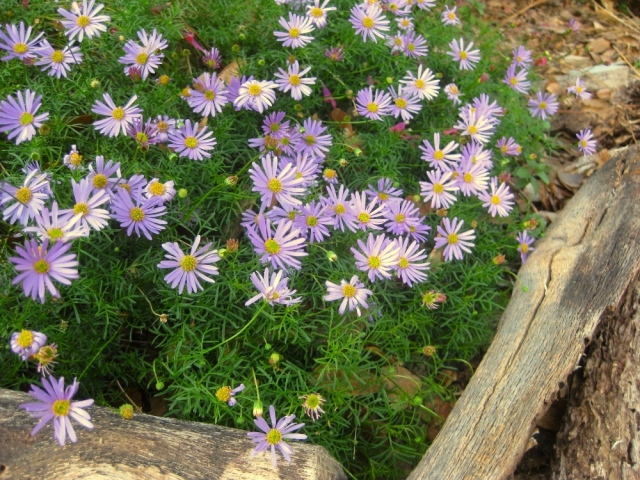
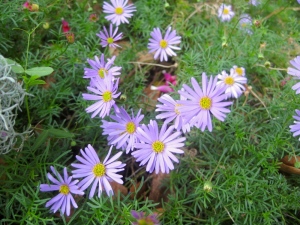
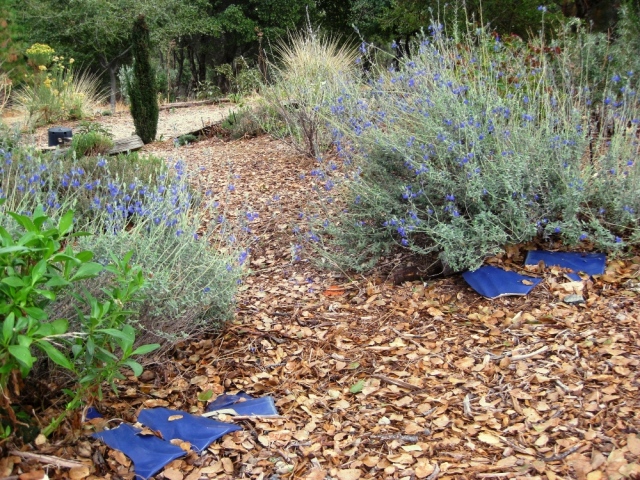
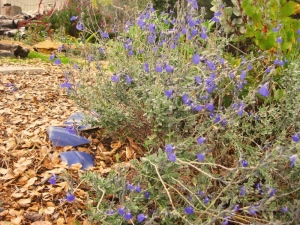
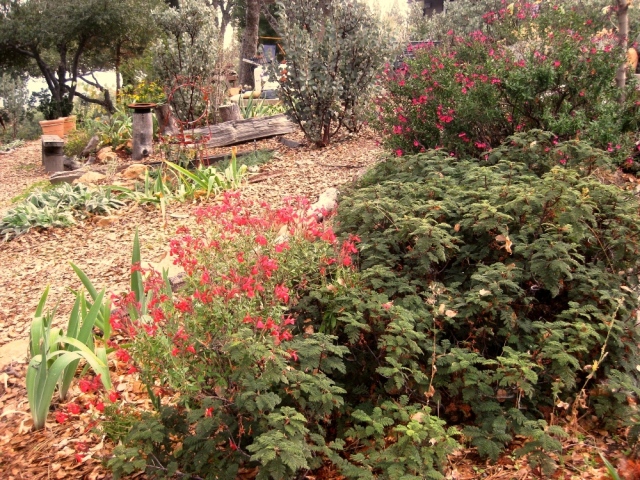
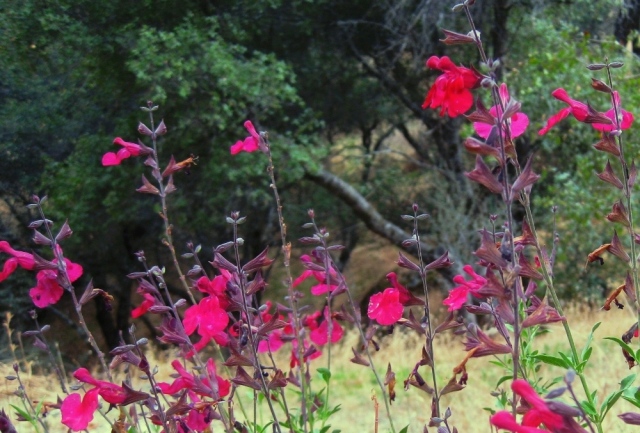

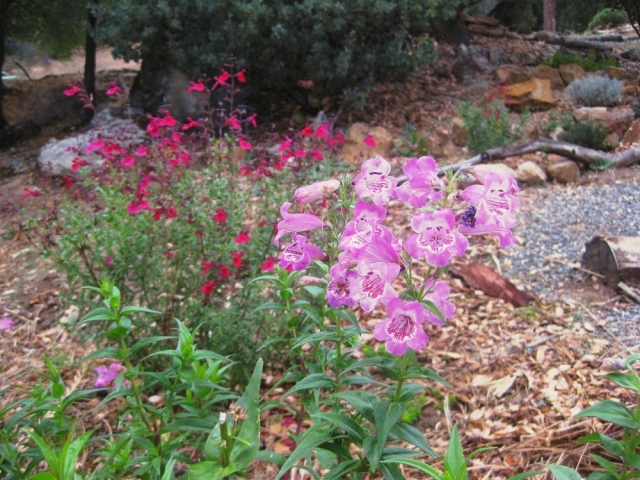
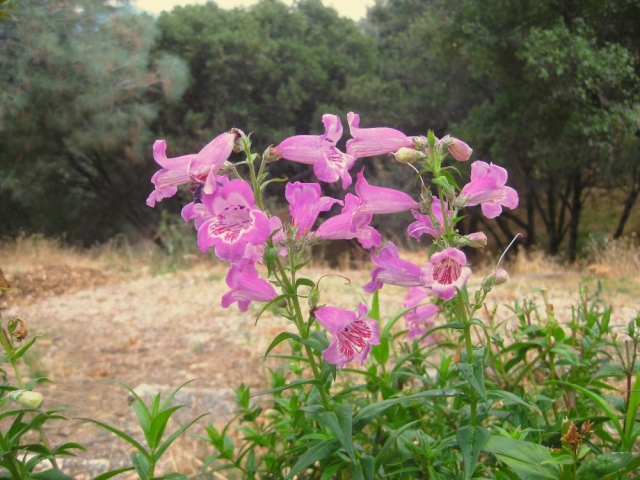
Pingback: An ideal plant list for a new Sierra foothill garden | Sierra Foothill Garden